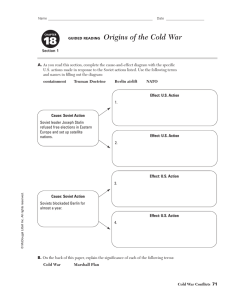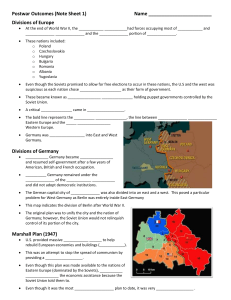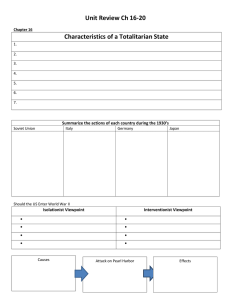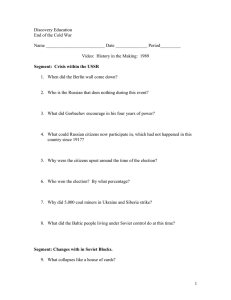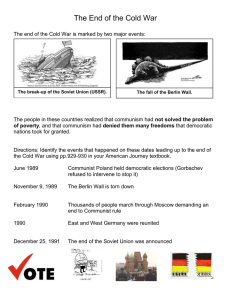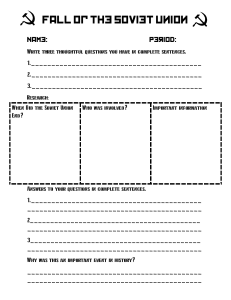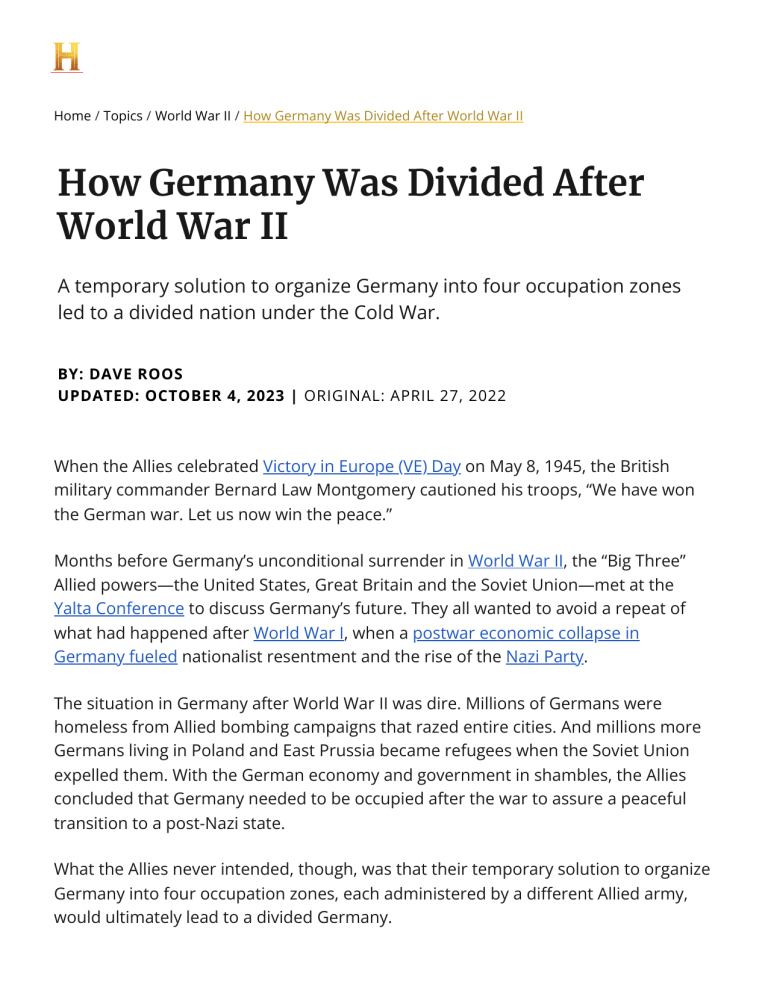
Home / Topics / World War II / How Germany Was Divided After World War II How Germany Was Divided After World War II A temporary solution to organize Germany into four occupation zones led to a divided nation under the Cold War. BY: DAVE ROOS UPDATED: OCTOBER 4, 2023 | ORIGINAL: APRIL 27, 2022 When the Allies celebrated Victory in Europe (VE) Day on May 8, 1945, the British military commander Bernard Law Montgomery cautioned his troops, “We have won the German war. Let us now win the peace.” Months before Germany’s unconditional surrender in World War II, the “Big Three” Allied powers—the United States, Great Britain and the Soviet Union—met at the Yalta Conference to discuss Germany’s future. They all wanted to avoid a repeat of what had happened after World War I, when a postwar economic collapse in Germany fueled nationalist resentment and the rise of the Nazi Party. The situation in Germany after World War II was dire. Millions of Germans were homeless from Allied bombing campaigns that razed entire cities. And millions more Germans living in Poland and East Prussia became refugees when the Soviet Union expelled them. With the German economy and government in shambles, the Allies concluded that Germany needed to be occupied after the war to assure a peaceful transition to a post-Nazi state. What the Allies never intended, though, was that their temporary solution to organize Germany into four occupation zones, each administered by a different Allied army, would ultimately lead to a divided Germany. “Only over time, as the Cold War eroded trust between the Soviet Union and the Western Allies, did these occupation zones coalesce into two different German nations,” says Thomas Boghardt, a senior historian at the U.S. Army Center of Military History. Four Allies, Four Occupation Zones In July of 1945, the “Big Three” met again at the Potsdam Conference. At Yalta, the Allies had agreed to a broad framework that included the demilitarization, democratization and denazification of Germany. With the war officially over, it was time to initiate a “nuts and bolts” action plan for an Allied occupation of Germany. Instead of administering and policing Germany side by side, as the Allies did in postwar Austria, the decision was made at Potsdam to divide Germany into four distinct occupation zones, one for each Allied nation (including France). The British were assigned the northwest quadrant, the French the southwest, and the Americans the southeast. Since the Soviet army already occupied much of eastern Germany, the Soviet Union was put in charge of the northeast quadrant, which included the capital Berlin. Berlin itself was also subdivided into four quadrants, with the British, French, Soviets and Americans each policing a different zone of the capital, which was fully surrounded by Soviet-occupied territory. “At the Potsdam Conference, the idea was that a central authority called the Allied Control Council would issue joint directives that would then be executed at a lower level by each Ally in their occupation zone,” says Boghardt, author of Covert Legions: U.S. Army Intelligence in Germany, 1944-1949. “The devil was in the details, though, and the longer the occupation lasted, it became clear that this was not workable.” Rifts Between Soviet and Other Occupied Zones From the start, the Soviets ran their occupation zone very differently than the British, French and Americans. “The Soviet army and Russian civilians had suffered terribly at the hands of the Nazis during the war,” says Boghardt. “So when it came to carrying out the joint directive of denazification, for example, they not only arrested Nazi officials, but they considered all major German landowners to be Nazis. So they confiscated their land.” The same was true of the joint directive to establish free and democratic elections in each zone of occupation. On the surface, the Soviets allowed the formation of independent political parties in their zone, but they soon forced all parties to merge under a Communist “coalition” controlled by Moscow. The move was heavily criticized by the Western Allies. But the biggest rift between the Soviet Union and the rest of the occupying nations formed around the issue of war reparations. One of the reasons that the German economy collapsed after World War I was that it had to pay billions of dollars in reparations demanded by the Treaty of Versailles. The British, French and Americans wanted to avoid that mistake, but the Soviet Union, whose own economy was heavily damaged by the Germans during World War II, wanted Germany to pay up. A deal was struck in which the Soviet Union agreed to trade food grown in its occupation zone for cash reparations and finished goods from German factories in the western occupation zones. But when the Soviets failed to keep up with their agricultural shipments, the Western Allies cut off reparation payments. By 1946, tensions escalated further as Soviet military forces helped to establish Communist regimes in Romania, Bulgaria, Yugoslavia and Albania. In a famous speech, Winston Churchill, the former British Prime Minister, described the threat of Soviet Communism as an “iron curtain” descending across the European continent, signaling the start of the Cold War. Any chance of cooperation between the Western and Soviet occupying forces was fading fast. Tensions Lead to the Berlin Blockade In 1947, Great Britain and the United States decided to merge their two occupation zones in order to foster more economic cooperation between the regions. The large new territory was called “Bizonia” referring to the two zones that made up its borders. Then the western Allies took things a step further by stepping up economic aid to Bizonia and the French occupied territory with cash from the Marshall Plan. They also replaced Germany’s badly inflated currency, the Reichsmark, with a new and more stable Deutsche mark. All of these actions were taken without Soviet approval. Tensions came to head when the western Allies tried to circulate the new Deutsche mark in Berlin. The Soviets boycotted the Allied Control Council, and when the West didn’t bow to their demands, Joseph Stalin ordered a total blockade of Berlin, located 100 miles inside Soviet-occupied territory. “Berlin is an island in the Soviet zone,” says Boghardt. “Stalin decided to squeeze the western Allies where they were most vulnerable. He cut off all access to West Berlin by road, train and ship, but not by air.” Berlin Airlift Breaks Blockade The Americans, British and French responded with the Berlin Airlift, a months-long air campaign to drop food and fuel into West Berlin that ultimately broke the Soviet blockade in 1949. Later that same year, France officially merged its occupied territory with Bizonia, creating the Federal Republic of Germany, or what became known as West Germany. In October of 1949, the Soviet Union responded with the establishment of the German Democratic Republic, a Communist state known as East Germany. In 1952, East Germany began policing its Western border to stop the flight of engineers, scientists and doctors to West Germany. Interestingly, the border within Berlin wasn’t as tightly controlled. “For eight years, there was that loophole,” says Boghardt, “when it was very easy for anybody who wanted to flee East Germany to do so. All you had to do was hop on a subway in East Berlin and exit in West Berlin.” On the night of August 12 to August 13, 1961, East German soldiers in Berlin laid out miles of barbed wire that would become the Berlin Wall, sealing the border with West Germany for the next 28 years. BY: DAVE ROOS Dave Roos is a journalist and podcaster based in the U.S. and Mexico. He's the co-host of Biblical Time Machine, a history podcast, and a writer for the popular podcast Stuff You Should Know. Learn more at daveroos.com. Citation Information Article Title How Germany Was Divided After World War II Author Dave Roos Website Name HISTORY URL https://www.history.com/news/germany-divided-world-war-ii Date Accessed February 3, 2024 Publisher A&E Television Networks Last Updated October 4, 2023 Original Published Date April 27, 2022 Fact Check We strive for accuracy and fairness. But if you see something that doesn't look right, click here to contact us! HISTORY reviews and updates its content regularly to ensure it is complete and accurate. Contact Us Copyright Policy Privacy Policy Terms of Use Ad Choices Accessibility Support © 2024, A&E Television Networks, LLC. All Rights Reserved.

